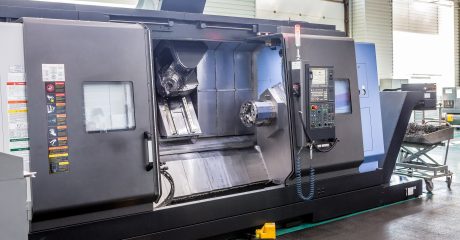CNC machining is a subtractive manufacturing process that involves shearing away material until the final product is achieved. While cutting speed is more important in optimizing factors like tool life and power consumption, the feed rate is vital in determining the machining time and roughness of the finished area. This article will compare feed rate vs. cutting speed and explain why the difference is important.
What is Cutting Speed?
Cutting speed is generally defined as the relative velocity between the surface of the workpiece and the cutting tool. Machinists measure cutting speed in meters per minute or feet per minute. The cutting speed is quite an important factor in the determination of other parameters of CNC machining, such as cutting temperature, power consumption, tool life, etc. Its influence on these parameters serves as a significant difference between feed rate and cutting speed.
What is Feed Rate?
Feed rate is defined as the velocity at which the cutter is advanced against the workpiece. This is measured in either inch per revolution or millimeters per revolution. The feed rate also affects the same factors that the cutting speed influences. The only difference is that its effects are to a lesser extent. However, the feed rate is important in the final aesthetic look of the machined part (i.e., the surface finish of the machined part). Hence, its optimization is also quite important in CNC machining processes.
What is the Difference?
Due to the similarities both parameters have, it is possible to confuse them with each other. Though, there are quite a few practical factors that serve as the difference between feed rate and cutting speed. Examples of such factors include:
- Cutting Temperature and Tool Life – The extent of the effect of both parameters on cutting temperature and tool life differentiates them from each other. This is because the higher cutting temperature can hamper parameters such as the part’s tool life and surface finish. Hence, the difference between feed rate and cutting speed is the extent of their effect on cutting temperature and tool life.
- Surface Roughness and Scallop Marks – Scallop marks are also known as feed marks. These marks always accompany CNC machined prototypes and parts, and they are the main cause of surface roughness. The feed rate has a direct influence on the scallop marks present on any part. Hence, the higher the feed rate, the higher the degree of scallop marks and surface roughness. However, cutting speed does not affect scallop marks; hence it does not affect surface finishes.
- Directrix and Generatrix – The given path through which the generatrix moves is the directrix. In machining, the basic goal is to create geometrical surfaces with aesthetically pleasing finishes and higher accuracy. Hence, these two parameters are required in machining processes. The difference between speeds and feeds is that the cutting speed provides the generatrix while the feed motion provides the directrix.
Conclusion
Determining the optimal feed rate and cutting speed might be the factors that enhance your CNC machining process to get an adequately machined part. However, there is no need for you to worry about any of these production issues when you contact Custom Tool. With our experienced machinists and CNC machine programmers, you will always get the best-machined part every single time you work with us. So, give us a call today for all your CNC machined needs!
